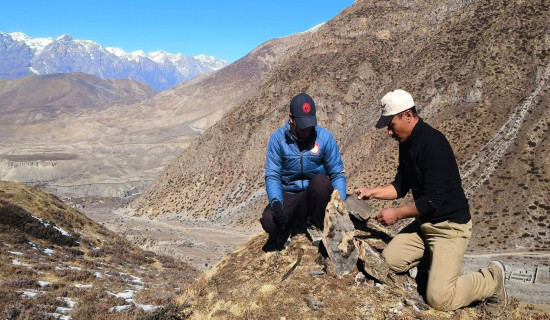- Monday, 1 December 2025
Power Of Influencers
Influencers dominate the digital age, shaping how young people think, dress, and dream. While they offer creativity and self-expression, they also promote unrealistic lifestyles, consumerism, and even misinformation. The real challenge is finding a balance between empowerment and illusion. Not long ago, children in Nepal dreamed of becoming doctors, engineers, and so on. But today, many teenagers say they wish to be YouTubers, TikTok stars, or Instagram influencers. We can even see some of the students dropping out of schools and colleges in order to pursue a dream as an influencer.
These days, you’ll see students mimicking dances, rehearsing lip-sync videos, or discussing the latest viral trend. This reflects the meteoric rise of influencer culture. But is it truly empowering our youth or misleading them with illusions of fame and fortune? Speaking of the positive side, influencer culture has made opportunities available for everyone. Unlike the majority of traditional celebrities who needed wealth or connections to gain popularity, influencers often start their journey with just a smartphone and an internet connection.
They represent the idea that anyone can rise to prominence, regardless of background. For many, this is empowering. For example, a teenager in Bhaktapur with an interest in dance can gain thousands of followers on TikTok. A young woman in Pokhara can share her poetry with the world. Influencers have also used their platforms to raise awareness about mental health, body positivity, or even environmental issues like plastic waste in Kathmandu Valley. In this way, social media has given young voices a stage that traditional media often ignored.
Moreover, influencer culture has created new professions. From food bloggers who endorse local eats to travel influencers who walk along Nepal's hidden paths, content creation is now a career option. The majority of Nepali youth is turning their pastimes into professions, earning income from platforms that reward creativity and dedication. For a generation so denounced as being "lazy," these influencers show impressive dedication, putting in long hours to shoot, edit, and engage with fans. Their own stories of achievement motivate other young people to be innovative and entrepreneurial on a scale that traditional careers may not provide.
But there is another side to this story, too. Influencers' well-constructed world tends to produce illusions of perfect lives with luxury clothing, luxury holidays, and perfect looks. For sensitive teenagers thoughtlessly swiping on TikTok or Instagram, repeated exposure to these images can generate unsafe comparisons, negative self-esteem, and even depression. In Nepal, where many families are already facing economic hardship, such "lifestyles of perfection" can add frustration among teens who perceive that they are falling behind.
Also concerning is heightened consumerism. The majority of influencers are corporate-sponsored, selling commodities that their audience does not always require. Cosmetics, foreign electronics, or slimming tea are a few of the commodities on the list. The unwritten shared denominator is that success is tied to consumption. For young people building values, this makes materialism and superficial success the standard. Worst still, some influencers post inaccurate information about quick weight loss tips, beauty tips, or even health tips. Most young fans, lacking media literacy, take these assertions for granted.
Influencers also face unprecedented pressure to stay in the loop, which leads to burnout, cyberbullying, and stress. Getting over the spotlight leaves them inexperienced and unguided, and hence, crashes go unnoticed. Influencer culture is neither good nor bad, but it also depends on the values that they believe in and to what extent their followers are concerned about them. For example, a health influencer promoting healthy living can be positive, but a travel blogger promoting eco-tourism can instill sensitivity. The truth is balanced between influencer culture and the principles that their followers hold.
Influencer culture is a rising trend that can be positively shaped by schools, policymakers, and social media sites. Schools ought to educate youth in online literacy to think critically about online content, while policymakers and platforms ought to implement transparency in advertising. Teachers and parents ought to make youth aware that influencers are likely to create trends, but ought not to become the centre of self-esteem. By encouraging responsibility, accountability, and awareness, influencer culture can be a creative power and a power for empowerment, without triggering insecurity, disinformation, and shallow values.
In the end, perhaps most essential for young people to know these days is this: admire influencers for their creativity, but do not interchange their manufactured world with the real thing. Influencers may create trends, but it's up to us to build our values.














